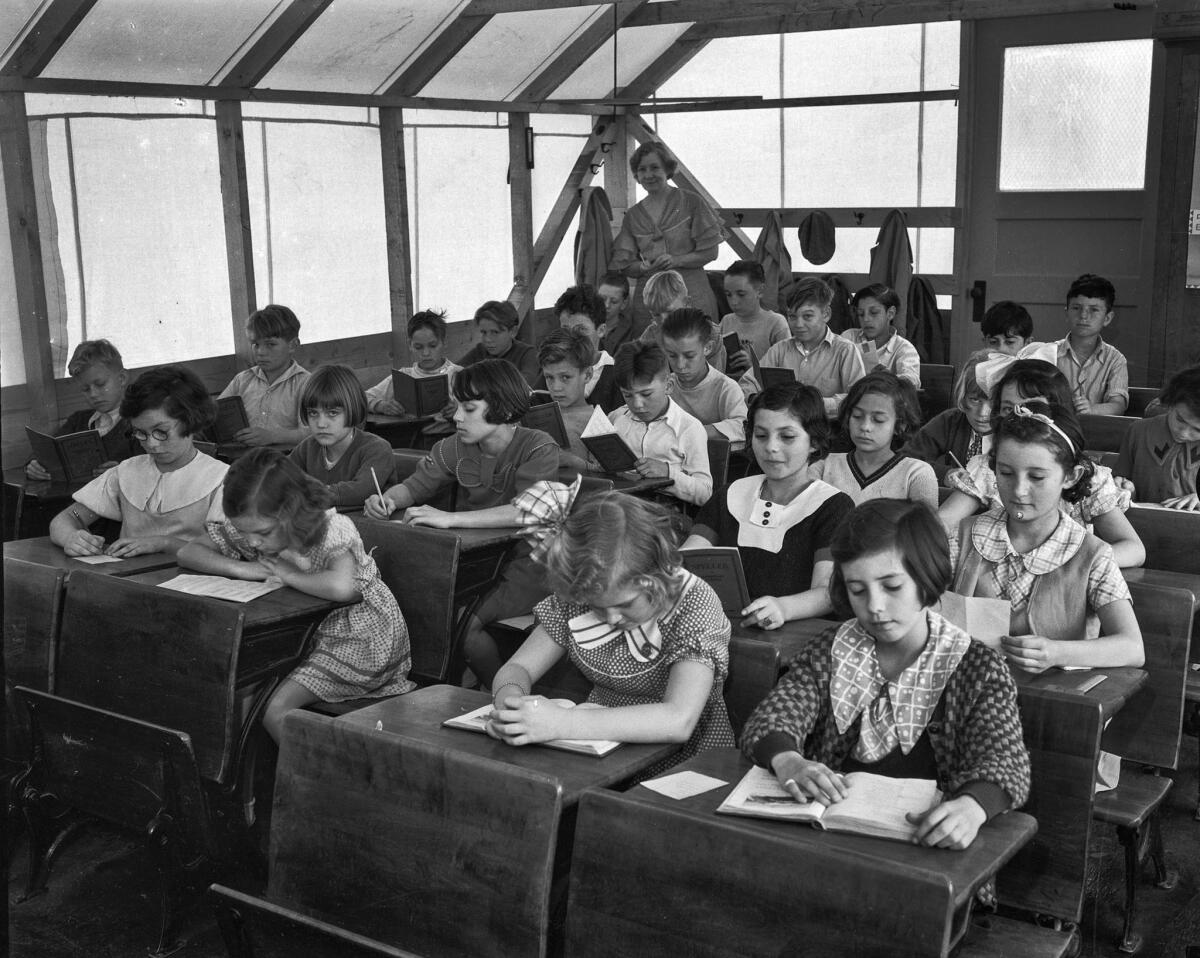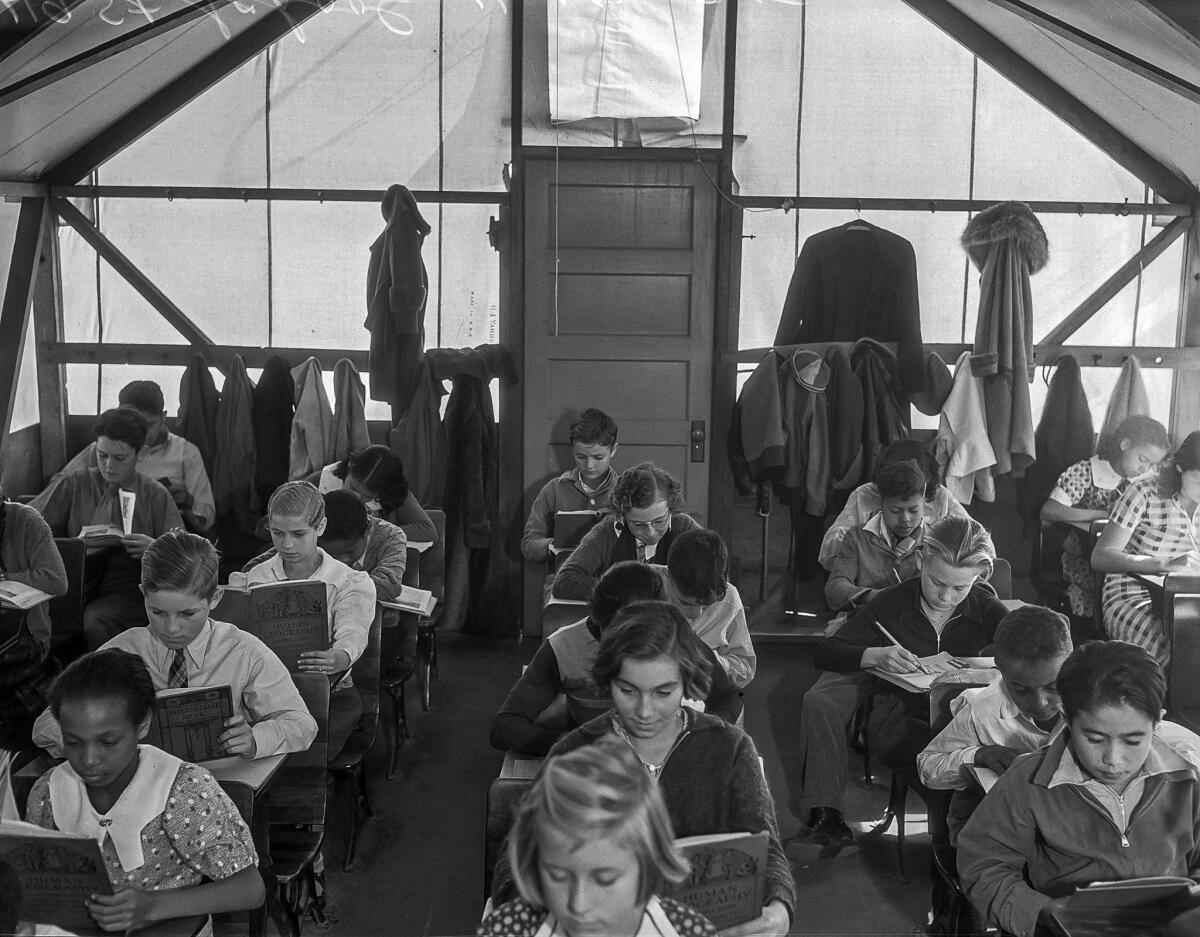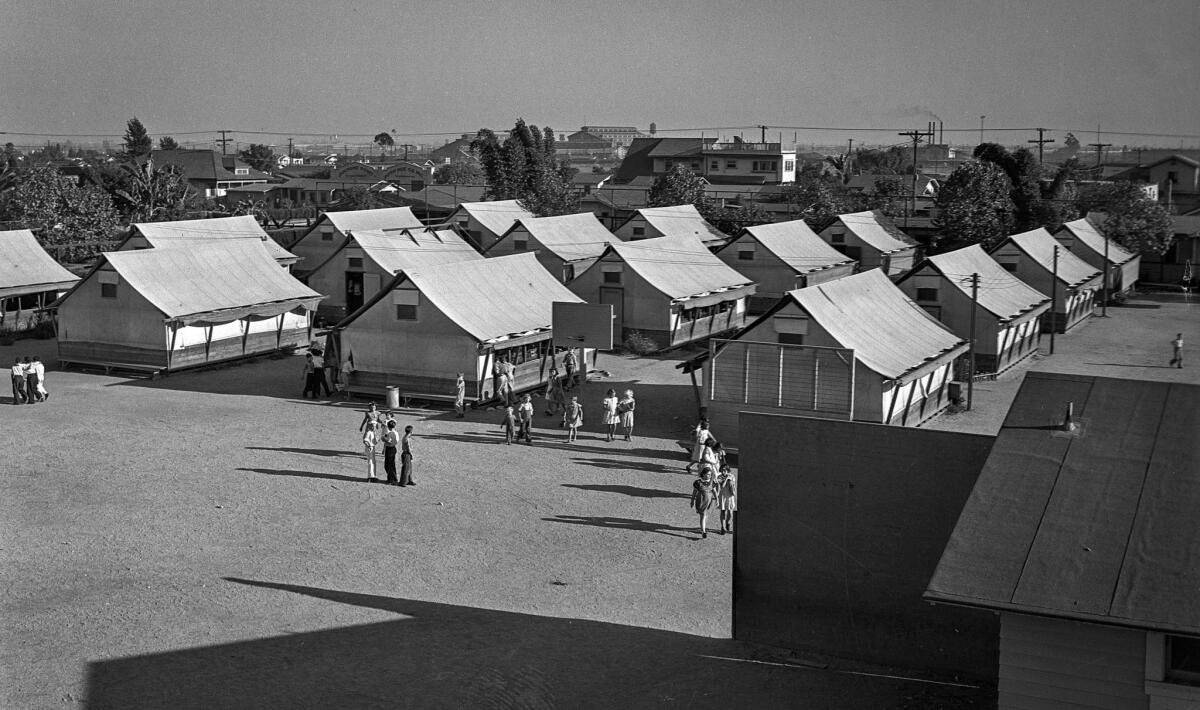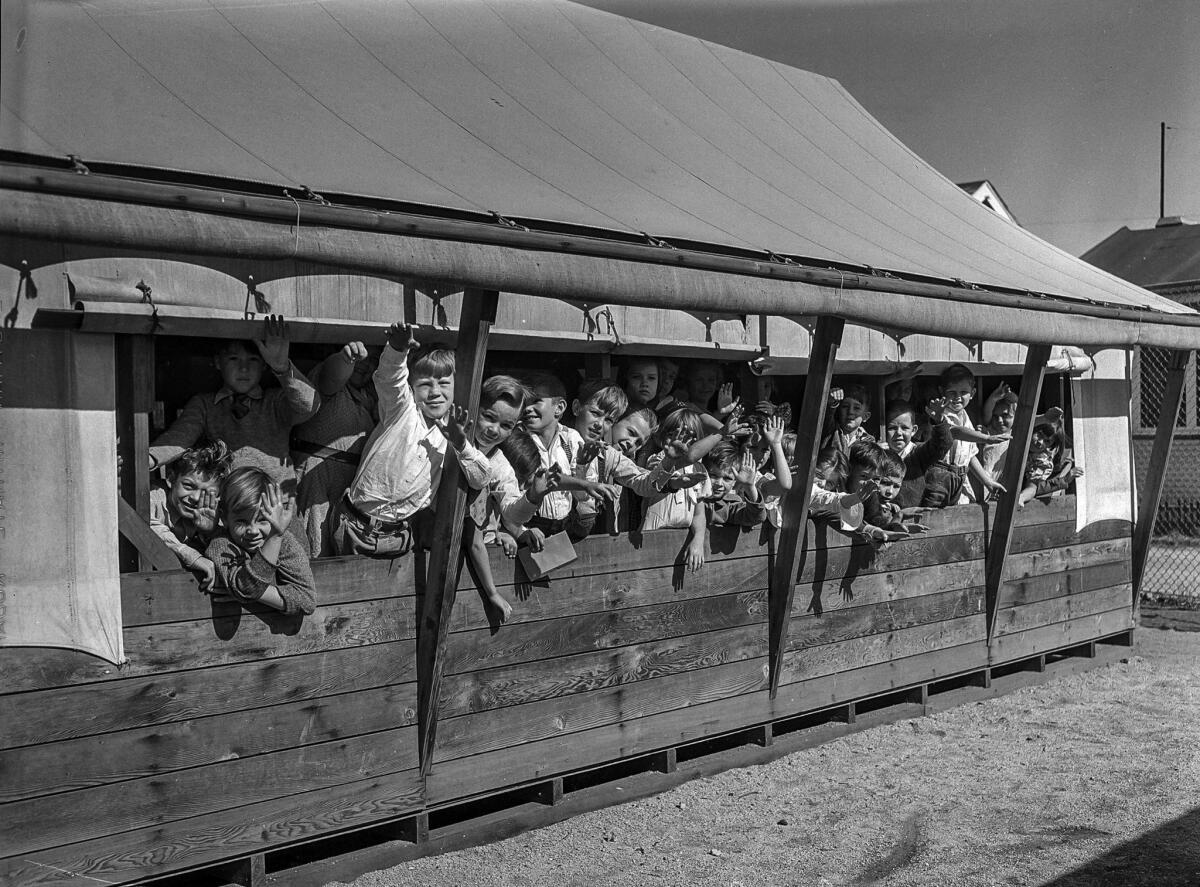From the Archives: After the 1933 Long Beach quake, students attend school in tents

TheMarch 10, 1933, Long Beach Earthquake heavily damaged hundreds of school buildings. About 230 schools were leveled, heavily damaged or judged unsafe to occupy.
Schools were empty when the magnitude 6.3 earthquake struck at 5:54 p.m. If the earthquake had struck earlier, thousands of schoolchildren could have been injured or killed.
A month later, on April 10, 1933, the California State Legislature passed the Field Act, that mandated school buildings be reinforced to withstand earthquakes.
With many Los Angeles schools red-tagged, classes were held in tents.
A Sept. 12, 1935, Los Angeles Times reported that: “Canvas shelters, into which regulation school desks and chairs had been crowded, yesterday housed nearly one-tenth of the more than 250,000 youngsters who returned to their schools in Los Angeles Tuesday morning.”
“In addition,” the Times reported, “to the nineteen damaged schools which were restored during the summer and the ten new ones which were built at a cost of $1,965,878, the board announced 437 canvas tents now house 24,000 metropolitan elementary and high school pupils.”
Money was needed to upgrade school buildings. In 1934, the Los Angeles Board of Education proposed three bond issues totaling $20,411,497. Despite heavy promotion by the Los Angeles Times and public officials, the bond measures failed to get the required two-thirds vote.
A similar Nov. 19, 1935, bond measure passed. The $12,302,600 of bonds carried by a majority of nearly 3 to 1. Once approved by voters, an additional $10,139,400 of grants were received from the Federal Public Works Administration.
In support of the bond measures, the Los Angeles Times published numerous images documenting the canvas tent classrooms. The Nov. 18, 1935, Los Angeles Times included an entire page of tent photographs.



Sign up for Essential California
The most important California stories and recommendations in your inbox every morning.
You may occasionally receive promotional content from the Los Angeles Times.







